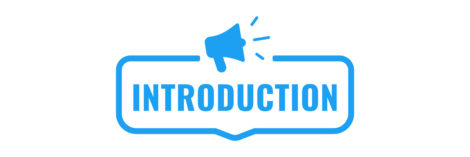Different methods can govern a qualitative interview (one of the leading techniques in qualitative research). One of them is the scenario method, also called “vignettes”. In this article, we discuss the use of real-life scenarios to simplify the respondents’ speaking process.
What is the scenario or “vignette” method?
The scenario, or vignette, is the description of a situation that is most often hypothetical and into which the social scientist wishes to immerse the respondent before interviewing him, or her. Reduced to its simplest expression, the scenario can consist of a single sentence. However, it is important to include elements that will stimulate the beliefs, perceptions or attitudes that one wishes to study.
Advantages and disadvantages of the scenario method
The advantages of the scenario method in qualitative research are multiple:
- easy to use, they are within everyone’s reach
- they have been in use for several decades, which makes it possible to establish the reliability of the approach
- they can be adapted to multiple situations and allow the projection of a hypothetical situation that would otherwise rarely be observable
- they help to put all respondents on an “equal footing.”
There are also disadvantages associated with the use of vignettes describing fictitious situations:
- Difficulties in analyzing respondents’ discourse when focusing on their ideas instead of taking the fictional characters’ perspective in the vignette.
- Distinguishing between the respondent’s own opinions and the part of the discourse that represents social norms. When the scenario contains hypothetical situations that the respondent has never faced, their responses may not reflect what they would do but rather what is acceptable to say (social norms).
The “vignettes” or scenarios used in qualitative interviews most often relate to fictitious situations. This article presents an approach that uses scenarios from real cases.
The use of real-life scenarios: advantages and disadvantages
In a 2020 article, Sampson and Johannessen introduce the notion of real-life inspired vignettes.
Their research led them to observe real but rare situations in risk management on the high seas. Notes taken on the spot allowed the creation of vignettes describing these situations. These vignettes were presented to respondents for feedback and to explore their daily practices in managing risks at sea.
Risk management at sea is subject to stringent rules that must imperatively follow specific procedures. Practices different from those described in the guidelines are, therefore, theoretically rare. There was a risk that respondents might make a “facade” statement that does not reflect actual practices. Thus, the researchers came up with the idea of using real situations observed in real life as narratives to “put the respondent at ease.” The article contains many verbatim accounts that are as many testimonials that this strategy worked. In particular, we should note that specific reactions seem to be firmly anchored in the respondents’ memory because of the emotional charge with which they are associated. This is reminiscent of the Critical Incident Technique (CIT).
In the end, vignettes are described as a “short cut to credibility in a challenging research context.” The authors of the research see this qualitative approach as a way to avoid the trap of idealized responses in the case of fictitious scenarios. In particular, real-life situations acted as a lever to free speech in seemingly “unacceptable” situations.
Conclusion
In qualitative research, the use of vignettes based on real-life situations has several advantages, particularly concerning exploring situations in which the truth could be hidden behind a facade discourse. However, Sampson and Johannessen caution that more preparatory work is needed to develop these vignettes than is the case with fictitious vignettes.
References
Sampson, H., & Johannessen, I. A. (2020). Turning on the tap: the benefits of using ‘real-life’vignettes in qualitative research interviews. Qualitative Research, 20(1), 56-72.
Posted in Research.



